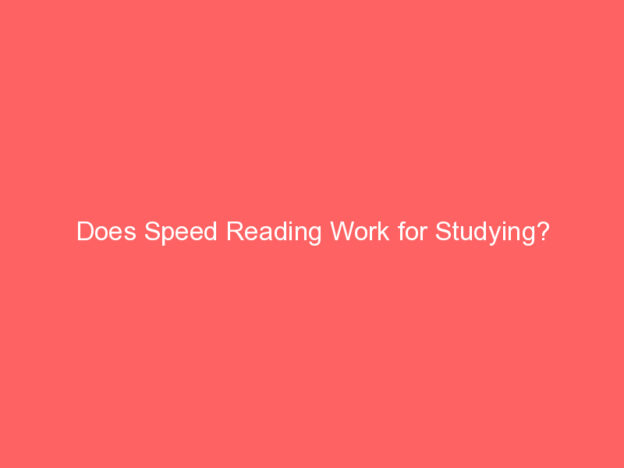Speed reading (and it’s even faster cousin photo reading) seems like the answer to your prayers.
Read things faster.
Read them more accurately.
And remember more of what you’ve read with better comprehension.
What could possibly go wrong?
The first thing to remember with reading is that most of us vocalise the words we read in our head.
It’s probably been a while since you read things out loud.
But you’re almost doing the same thing now – and that slows you down.
A lot.
We don’t speak at anything near the speed that we could read.
Otherwise we’d sound like those cartoon chipmunks.
Which means part of speed reading is training your mind not to read out loud inside your head.
But there are other parts to the technique of speed reading that you can do whilst you’re gradually learning to turn off your mind chatter or turn down the volume of the words you’re reading.
A lot of what we read is padding.
Journalists are paid by the word.
Bloggers need words to attract search engines and visitors.
Text books command more money if you need to be a gym rat to be able to lift them off the shelf and the Amazon delivery almost gets dropped off by crane.
Let’s take a simple example:
An online recipe really only needs the ingredients and the preparation method.
Maybe a few photos.
But lots of them almost have the life story of the ingredients as well.
Certainly lots of background info that’s maybe interesting but not much use if you just want to make the dish.
The same goes for lots of other subjects.
You’ve probably watched a YouTube video where the whole subject could have been covered in about a minute but the presentation went on for 4 or 5 times that long.
Written words are even more consuming.
A diet book typically takes 300 pages to tell you to eat less and cut out certain foods.
So skimming is an essential part of speed reading.
It’s looking through the headings and sub headings.
Ruling in the things that are important to what you’re trying to learn.
Ruling out the things that are maybe nice to have but don’t really add to your knowledge of the subject.
So if you skim first then even if you read the final parts at normal speed, you’d actually have sped up the whole process.
Probably by an order of magnitude because of all those chapters you left (not just the forward or the glossary or the thanking everyone who knows me lists)
The next technique that’s often used in speed reading is one you probably haven’t used for years.
It’s using your finger or something else to keep track of where you are on the page.
Sure, it’s more “grown up” not to do that.
But it’s also slower because your eye loses track much easier than your finger.
Couple that with skimming the text so that you’re looking for the important words and sentences and you’ll increase your reading speed no end.
If you’re lucky enough to have a book that has a summary at the end of each chapter, it’s time to jump for joy.
You can apply the 80/20 rule to the whole book by just reading the summaries and maybe digging down deeper to the bits that still don’t make sense.
Your final exam won’t expect you to write out the whole book verbatim.
Apart from anything else, there wouldn’t be time to do that.
So, if you think about it for a minute, the exam is little more than those summary pages anyway. Maybe even less than them if it was a thick book you were studying.
Of course, speed reading takes practice.
You can’t just start it and expect to be up with the world leaders who read upwards of 1,000 words a minute with top notch comprehension.
But even if you just manage to not have to read half a book because it’s filler and increase your reading speed by 10% for the remainder, that’s still a nice reduction in the time you’re spending with your nose buried in a book, studying.
One other way to help yourself with speed reading is to use hypnosis.
That will help you to absorb the information and boost your comprehension of it.
It’s quick (as you’d hope) and it works.
Click this link for an instant hypnosis download to help your speed reading.








